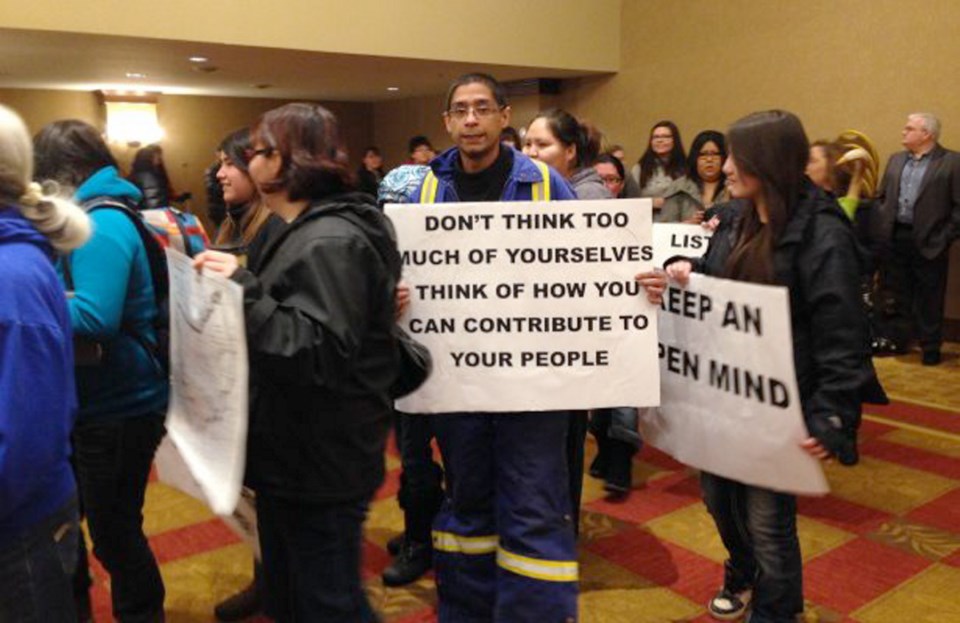FORT ST. JOHN — A procession of drumming Treaty 8 first nations provided a dramatic opening Monday to the Joint Review Panel reviewing B.C. Hydro’s proposed $7.9-billion Site C dam in the Peace River Valley.
At least 75 natives wore furs, beaded buckskin jackets, cowboy hats, and headbands woven from bark, and carried flags and signs asking the panel members to “seek in the truth in all things” and “listen when an elder is talking to you.”
Both natives and non-natives also lined up to put objects of importance on the floor in front of the panel table. They included food, class-one agricultural soil, pelts, antlers, historic photographs, baskets, traditional plants, and a canoe paddle.
The panel briefly adjourned the hearing so that members of the public could come up and observe the objects.
Gary Oker, a drummer and former chief with the Doig River First Nation, explained in an interview that the objects are not gifts, but meant to provide a hint at the cultural significant of the panel’s work. “The importance cultural context has not been addressed — the values of the people, the principles people live, the connection to the land, the songs, the stories.”
Members of the Site C panel include chair Harry Swain, a former federal bureaucrat, including in the Department of Energy, Mines and Resources, who is a research associate at the Centre for Global Studies at the University of Victoria; James Mattison, who served 25 years with the B.C. Ministry of Environment, including as assistant deputy minister and comptroller of water rights; and Jocelyne Beaudet, a communications consultant who previously sat on the review panel for a hydroelectric project in Quebec in 2004-06.
Four First Nations communities have banded together to fight the project — Doig River, Halfway River, Prophet River, and West Moberly.
Three other Treaty 8 First Nations — Blueberry River, Saulteau, and McLeod Lake — have agreed to negotiate for compensation and have been offered “impact benefit agreements,” confirmed Dave Conway, B.C. Hydro community relations manager in Fort St. John.
Compensation could involve money, land, employment and contracting of work.
B.C. Hydro is seeking to build a 1,100-megawatt dam that would flood 83 kilometres of the Peace River from almost Fort St. John upriver to Hudson’s Hope. The dam would be 1,050 metres long and 60 metres high and would also flood 14 kilometres of the Halfway River and 10 kilometres of the Moberly River.
Hearings will begin continue until in the Peace River region Dec. 19, then resume Jan. 6 to Jan. 23.
During an earlier B.C. Hydro bid for Site C approval, the B.C. Utilities Commission in 1983 recommended that other energy sources be studied and ruled that projected electricity demands did not then justify the dam project.



